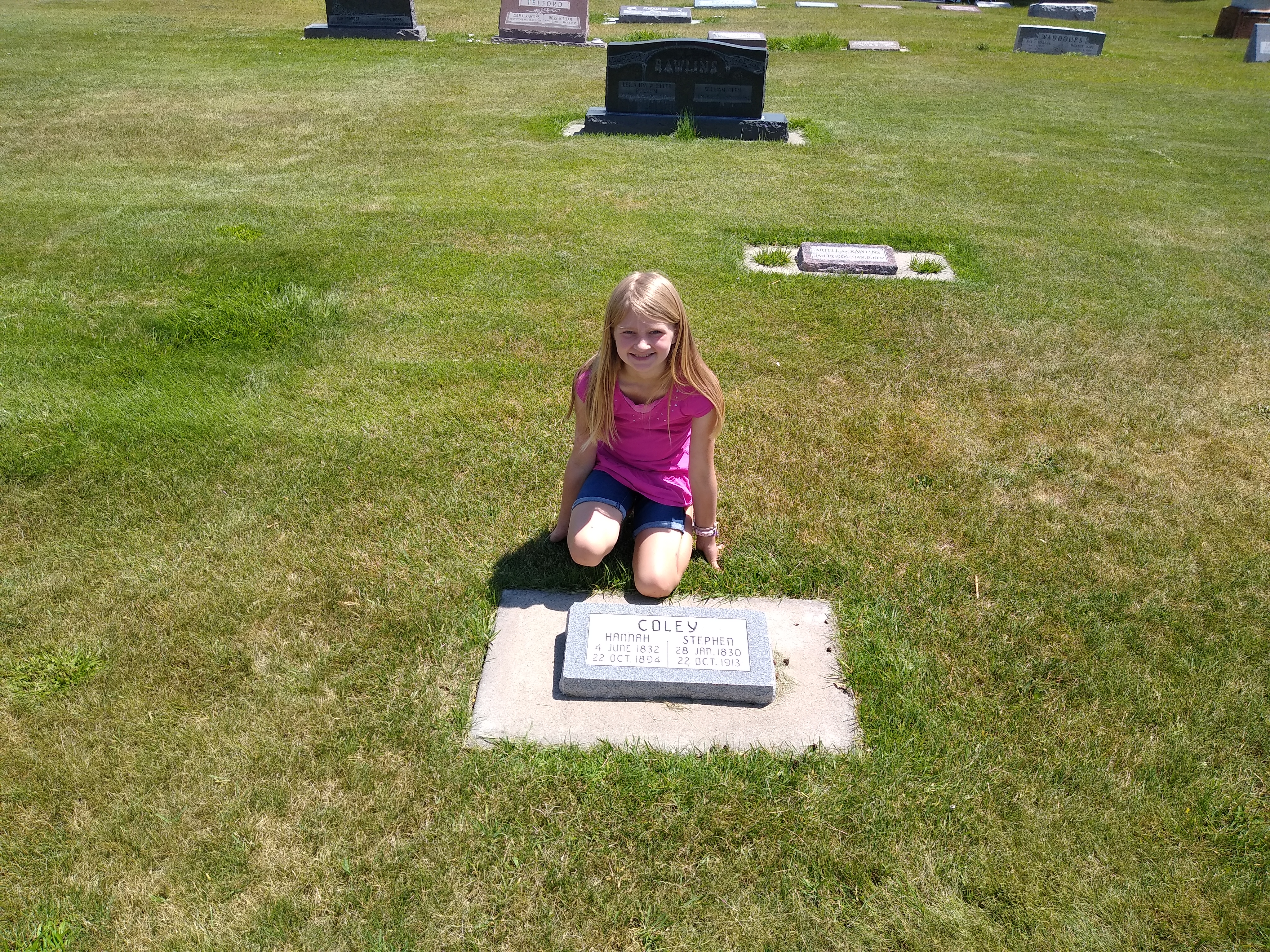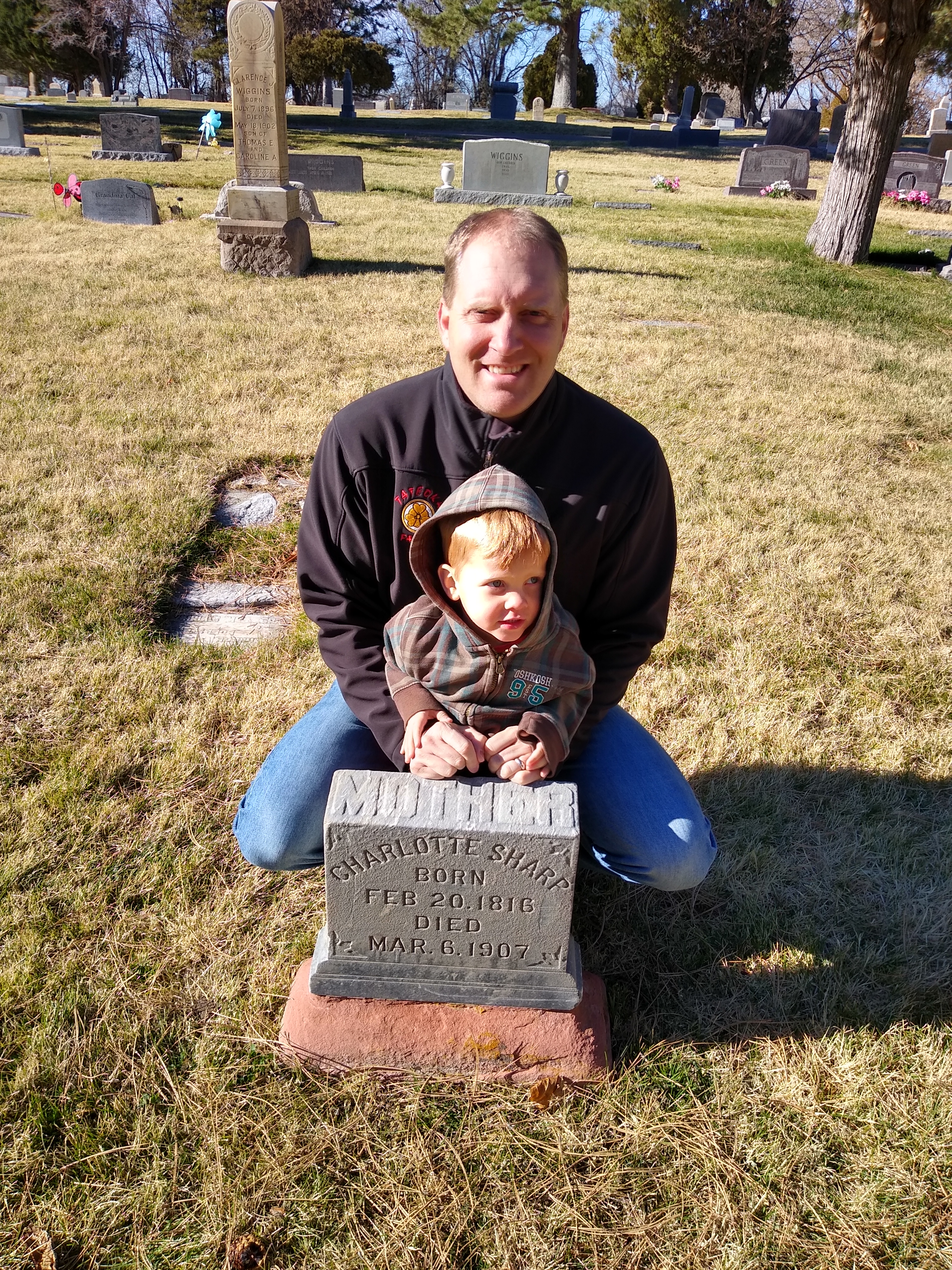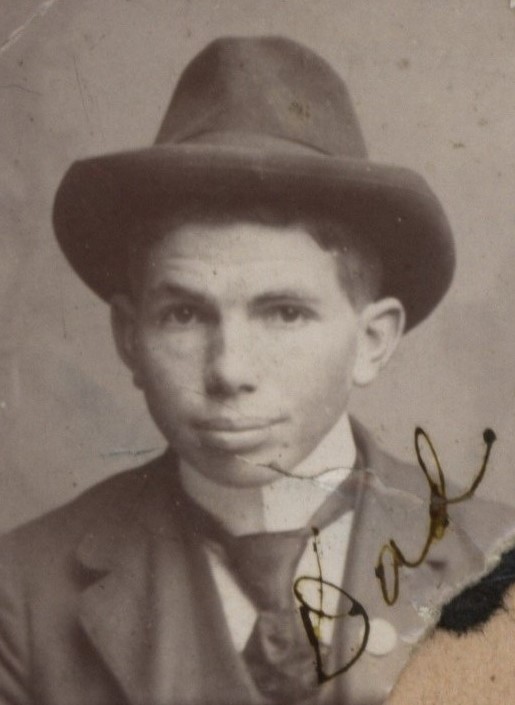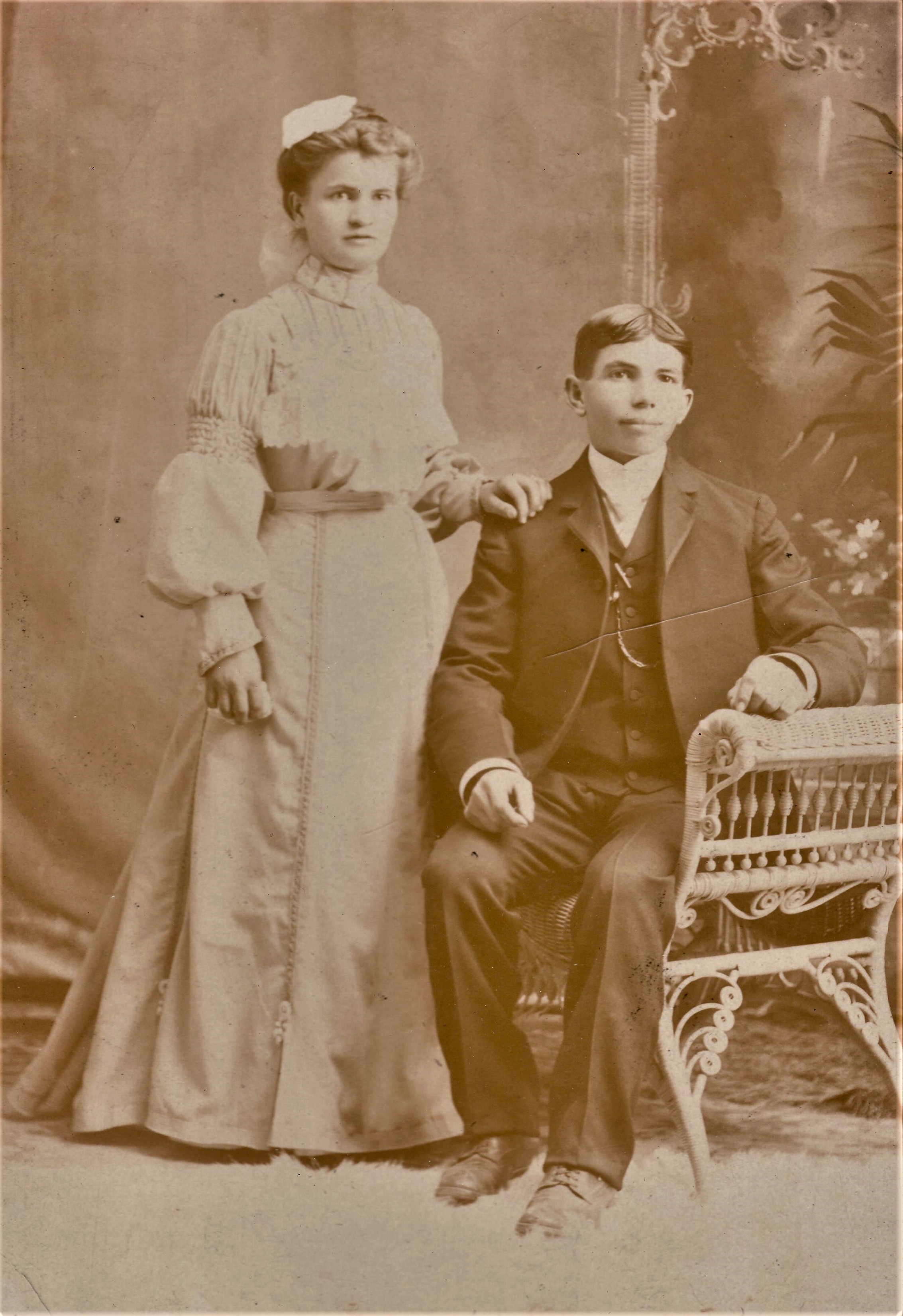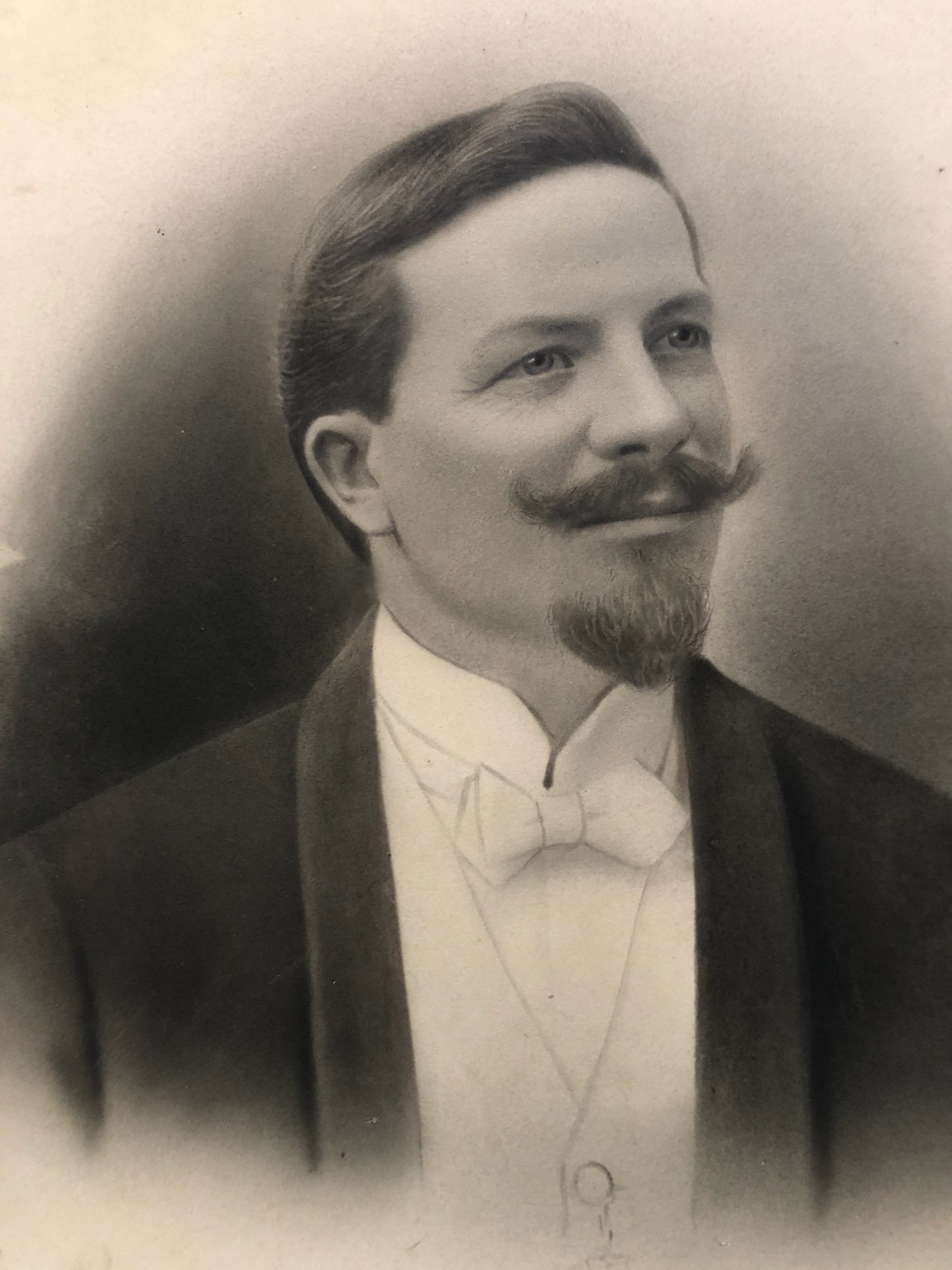This is a story that was included with the documents I received from Golden Andra’s family. I thought I would share and preserve it for whatever value it might have. It appears to jump between multiple writers.
“Dear Cousins:
“At our reunion last year 16 June 1979
“William Andra Jr. President of the Wanner – Schmid Family Organization, introduced Trudy Schenk as our new genealogy researcher, Trudy says “guten-tag,” which means “good-day,” in german. William ask his wife Edith to ask her Norwegian researcher if she knew a german researcher, she said yes her name is Trudy Schenk. So William & Edith met Trudy, was very impressed with her, so they called Jess Wagstaff and told him they were coming up to see me. They took me out to dinner and told me about Trudy, and ask me to come to Salt and meet her, so I did this was the 26 Feb 1979, and after having a nice talk with her we hired her to be our researcher that same day. We pay Trudy $5.00 per hour, which is very reasonable as researcher’s wages go.
“Trudy was born in the next county west and a little north of Atzenweiter (which is near Gruenkraut) where our Grandparents lived. They moved there after Uncle George and aunt Christenia were born at Holzgerlingen. Trudy was born at Kenzingen, Baden, Wuert. and came to Utah when she was 20 yrs. old. So she knows the German Language as well as the Country.
“Trudy attended our reunion 16 June 1979 in Logan, Utah and told us about the history of our Ancestors.
“Trudy says: once again I wish to emphasize to you how hard working Jess and Edith are. Edith types your Family Group Sheets clear into the night, sometimes when William is away with his work she types all night, to keep your genealogy work going. I think I’m really blessed to work on the WANNER – SCHMID genealogy, very, very blessed. I feel these films of the Wuerttemburg records was filmed by the Church, because of a certain reason, those People was waiting, up there, to have their Temple Work done for them. These are the only Lutheran records we have of the whole state of Wuerttemberg and others are not to come until a year or more or maybe never before the Church may get back to filming there, they just don’t let people come in and take films, so anyway I feel you are a very blessed people and your Ancestors who have gone on will love you for the money you spend in putting Their Names into the Temple.
“You have heard of the new Extraction Program that the Church is doing I’m sure, and that the Prophet is telling us that we should do four generations, Well! he has also told us to lengthen our stride, I ask someone who is in charge of the Extraction Program down there and they told me, that Wuerttemburg isn’t even on the list, hasn’t even been approved yet for Extraction, your Ancestors would have to wait for years yet, until that work could be done by the Church. Of course the Church is still depending on the people that have family organizations like yours. There are not many of them among the Mormons in Utah or any where, that have a organization like you do and you ought to be contratulated for this. but anyway because of this you have been able to do many, many, names I think thousands of names that you have been able to do, to get the Temple Work done.
“I have made a copy of an original map of Germany. I have made a little circle for my home town which is Kenzingen, (its on the west, up from Freiburg.) I have made a little square for Gruenkraut and Atzenweiler, where your family came from to America. And a little cross by Isny, the original place where the Wanner family originated in the 1200 A.D. 1200 century and then I underlined the little towns where the people came from in the 1500 century on. The 1500 century is how far the records go back in Germany. These little towns are Holzgerlingen Breitenstein, all the villages where your people come from.
“The Pastors keep very good records even in those yrs. and yet sometimes they are very difficult to read, you set there and pray, so that you don’t make a mistake because some of these records are very hard to decipher, some are dark, spilled ink over them, soe of them have burned edges, some of them have gone through wards, some of them through many wars, so those people like you are very lucky that those records are still available.
“There is a larger scale map and all the little towns are underlined where your Ancestors on the Pedigree came from. Here is the 15 Generation Pedigree Chart that shows the Pedigree of the Wanner line we have gone across the front and the back can be filled up also as we have gone that far back and even more, there is just that information here in Salt Lake. Trudy Had Bill and Jess hold up this chart so it could be seen. Maria Catharina Schweitzer is our Grandmother’s Grandmother. This is where Trudy started working.
“If you would go to Germany and do the research there, you would have to go from Village to village, you would have to make appointments with the Pastors to get into the church to read the books you could only go when they were available, usually the Pastors teach school or religion classes after school, so you would have to wait until they were available or their secretaries were available and its much harder to do the research over there than it is here where if I want to go to a different Village I just get a different film if I need to know more.
“William Andra says when Trudy first started we just had the first two rows on the chart done, now in four months Trudy has done all the rest, plus some on the back. Jess Wagstaff says Trudy started with our Grandmother’s Grandmother. And that we can get the 15 generation charts for 50¢, and you will never get any fun out of doing your genealogy unless you get a 15 generation pedigree chart and fill in the names as you get the sheets. Down at the library the other day this sign hit me right in the eye, it says, “The Greatest responsibility in this World that the Lord has Laid Upon Us is to Seek after Our Dead.” by Joseph Smith.
“Now Trudy says – – I agree with Jess, its really the greatest responsibility – and the only reason they started the four generation program is because many people didn’t want to do anything, so they thought if they made it easy on them and just given them four generation to do they would do it, and you would be surprised how many people don’t have anything done yet. Yes we were told this is part of Our SALVATION, this is what we were told YOU CAN NOT GET THERE UNLESS THIS WORK IS DONE.
“I have made up a little history of the Wanner and Schmid Families, that I have found in books in the records the Pastors have keep, Now the Pastors usually didn’t give much information about private things the only things you can find is He was born he died, they were married and where, on such and such a date and that is about it. Only if something special happened to one of the members of these people then maybe you can find they died a certain death or if something happened, there, was an illegitimate child or somebody made a mistake, then you could be sure it was written there. They were a very religious people and they believed in excommunication, you might not believe this, if someone did something wrong they were excommunicated, from the Lutheran church, this was very interesting to me.
“I made a couple of copies of this little history of the Wanner’s, I wanted you to know that in Germany the Wanners were known as tub makers, in the Germany language a tub is known as “wanne,” and don’t laugh at my “W” I have to say Vanners like they do in Germany. The wanne is a bath tub, not only a bath tub but a wooden tub, they used them to make wine, they used them in bakeries, they used them to wash their laundry, or anything like that, thats where the Wanners got their name from, because they were the first people to make these tubs. “Jess wanted to know if they bath the same day after making their wine?” Ha! Ha! I tell you when they bath, none of them had bath rooms, they maybe bath once a week, they brought the tub into the kitchen, they had to heat the water on the stove, with wood they got by themselves out of the woods, and so they had it much harder than we did. But they had more time then we do. “Jess said thats exactly the way we did it when I was a kid,” and then someone spoke up and said “all seven or eight.”
“I found a “Coat of Arms,” of the Wanners, and I found it actually in some of your pedigree line in a book that was printed, I don’t know by who, but the reference is all there. There is a Coat of Arms, of the Wanners and one of the Hillers, there also on the pedigree line, and this tells you that the Wanners were tub makers. That they came also from a tiny little place of ISNY, that is also on the map, and went up after the reformation to the Lutheran church to help the Baptist Lutheran church in Holzgerlingen and other villages around there. The little man on the “Coat of Arms” is holding a yellow tub in his hands, it is a wanne in Germany therefore they were called the WANNERS.
“Now Jerry Wagstaff has done of the research earlier and he had done it out of the family registers, family registers have been put together by some of the Pastors later than when the actual deaths, birthers, or marriages happened and sometimes the Pastors made mistakes because they went by the original books and made up these families, so if you find a sheet now that has two more Names on, then Jerry did before, it wasn’t that Jerry made the mistake it was the Pastors that made a mistake earlier maybe two hundred years ago, I wanted you to know that. “Than Jess thanks Trudy and said that when Jerry copied some of the first sheets he had to pay the Pastors secretary to be with him while he made the copies.” Trudy said I’ve done research before, it isn’t easy to do research over there.
“Yet you have two lines that we don’t have records on here in Salt Lake they have not been able to be filmed and these will have to be done from Germany, if you want to go on with the NOTTERS and the NONNENMACHERS and I went to the officials to see if they were going to do them, and they said no, they didn’t have any cameras right there now and we don’t know when we will have them, so maybe later on I’ll have to go to Germany to finish them or engage someone over there, if I go to Germany I can sleep in my home town and won’t have to pay anything.
“O.K two little instances that has happened to the Wanners, the Pastor wrote in that I thought was interesting, the Wanner of your pedigree had gone to another village with his horse and on his way home he went into a Inn to eat something and he had his youngest son on back of his horse and when he went out of th eInn to get back on his horse shome how the horse got scared it jumped and he fell down and was killed right there. In another little instance the Pastor wrote down one of the Wanners went with another man to help cut down trees and wasn’t careful enough and when the tree fell he was in the way and killed by the tree, another that was interesting one of the children was born blind, I had never seen that in a record before, I thought that was interesting that the Pastor made a special point to put that down.
“I wanted you to know that these people were a very religious people because of it they joined the reformed church, the Lutheran church, they were all Catholic or something else by then but when the Lutheran church become the state church they joined them and one instance I read that they believed in the Millennium, this was in the 1520 and it was quite interesting to find out that they did not know what the Millennium was but they new that the Lord had something in store for them and it was called the Millennium and they didn’t know what it was. One made the remark, I want the Pastors to preach without getting any money for it, I want there to be Apostles like they were in the time of Jesus. I thought that was interesting so you can see they were always Truth Seekers they waned to find something better than what they had.
“Now you can look on the Wanner lines lots of them were Mayors, of the town, they were Janitors, they were city Counselors, and always in every family there was one or two of them that would have something to do on the city council and be leaders of the town, some Weavers, Shoemakers, sheep herders, there was a Doctor, there was two Ministers, School Teachers, and I found in a book of those early years it had pictures of people in their shops, it showed how they used to do it and I made a copy so you can look at them. The pictures don’t come out very good, pictures of these and the “Coat of Arms” and the history can be made of the Wanners.
“Now if you want you can ask me something you would like to know about or you can make comments: William Andra Sr was born in east Germany and he said it sometimes it rain so much that they had to hang the hay on the fence to dry. Trudy said also the grain and corn. Edna W. Owen said that her mother used to tell about the Black Forest, Trudy said there was two Black Forest and she lived between them.
“Then someone said they took brooms and swept the paths in the forest. Trudy said yes and that they had paths all through the forest but over here one has to follow the roads. She said also that on Saturday they would sweep the streets so they would be clean for Sunday. That last year when she came home from Germany the streets and yars around their place were so dirty, she said to her husband whats the matter with people? Don’t they live their country and homes? She was disgusted with them!
“Now I’m sorry but this is as much as I have where Trudy is answering your questions. If you can remember more, please write it down and mail it to me and I’ll write it up for everyone. THANK YOU. Jess.
“THIS HAPPENED TO TRUDY IN 1980
“Trudy says as she was working in the Library one day she went to get some tapes, she picked out one looked at it and said I don’t want this one, so she set it aside, picked out three she wanted went to leave and noticed the first tape and said to herself well I’ll take it along. After she got what she wanted off of the three taps, she went to get up and noticed that first tape, so she said I wonder whats on it, so she put it on the machine turned it on and had just gone a little ways and to her surprise – there was her Grandmother’s record – before her Mother died she had looked for three years for her Mother’s record and could not find it, she had been looking in the wrong area for it. Trudy said she cried – she went to Relief Society and told the ladies what had happened and they all cried with her. THIS WAS A WONDERFUL EXPERIENCE TO TRUDY! She told me to tell you about it. Jess.




























